 In most sports the knee joint ranks as the first or second most afflicted region. Due to this it’s injuries, their management and rehabilitation, be it invasive or conservative, have been extensively researched. In golf the occasions of knee pain are a lot less. For sure osteoarthritis of the knee joint can limit the more elderly golfer, but this is predominantly not singularly caused by golf and also generally the walk (over undulating terrain, bunkers, carting a bag etc.) is more of an aggravating factor than the golf swing. In the elite golfer studies tend to show that the knee joint is the affected joint in only about ~ 5-10% of injuries. Much less than the back, elbow, shoulder or wrist. However the trouble that Tiger Woods sustained with his left knee certainly brought the knee into the spotlight and the maybe debilitating effects that the forces produced in our modern swing can cause. The right knee experiences the largest of its compressive forces at the end of the backswing where-as the left knee maximal forces occur just before impact and into the follow-through. For both the left and right knee these maximal forces occur with tibial on femoral rotation. With this can come injury to both the medial and lateral joint compartments, including the meniscus.  So how do we protect the knees from these injuries? At both positions of the swing we must ensure physically and technically that we are not putting more than the necessary forces through them and that these forces are received in the best positions possible. For example; in the back-swing, if the player is lacking internal rotation of their right hip joint (<30 degrees) then to attain the adequate end of back-swing rotation the knee tends to extend (straighten) more. Either this or they can weight-shift laterally and/or posteriorly which brings on more problems (particularly in the back!) This knee extension, added with tibial rotation, increases the risk of injury. Similarly, the left knee extends with tibial rotation at impact and into follow-through. Here the forces are about ~50% greater than the right knee experiences in the back-swing. So not surprisingly it is in the left knee, and at this point in the swing that more knee injuries occur. Apart from compartmental and meniscal type injuries, the elite golfer can also suffer from patellofemoral joint syndrome, iliotibial band syndrome, bursal and fat pad impingements. As always, if you suffer from knee pain get it firstly assessed and treated by your relevant medical professional. If caused by golf then once settled or controlled you will need to attack the cause, and probably both physically and technically. Martin McInnes - Physiotherapist Why Consistency is a Myth and How The Golf Score Code is the Truth for Your Success in Golf28/5/2013
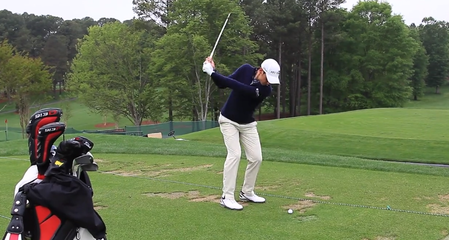 In our last lesson we discussed how important it is to lower your high score average to be successful in amateur and professional golf. It is a common misconception in golf to believe that you can be consistent at golf scoring. You can have a score average that would give the impression that you are consistent at golf, but your competitive score average - your B game is always a product of your A, and C game scores. Top level professional golfers will have a score variance of at least 10 shots from their best scores to their worst over a season, and in elite amateur golf it can be as much as 20 shots and sometimes more. The most successful professional golfers are really good at keeping the high scores off their score card. In contrast, go to any advanced amateur event and you will always find a percentage of the field that has really high scores that are not nearly consistent with their stated handicap. In fact is not unusual to see golfers with 1 and 2 handicaps scoring in the mid 80’s or higher in some tournaments. Now this doesn't make a lot of sense, but it is a reality of amateur golf. The reason is that their golf handicap is not a true reflection of their golfing ability, because if they were to submit every golf score they had in amateur golf tournaments, for many amateur golfers they would have a much higher handicap than is stated. Why do they do this? Well, for a variety of reasons but one of the most likely is simple peer pressure. They want to feel like they’re part of the low handicap crowd and as such they put their best cards in to get handicapped and keep their bad one’s out. So they create a false impression of their golfing ability because they basically only submit their A and B scores and eliminate the C and D scores. D scores are the really bad scores. Now you will never become a successful amateur or professional golfer with an attitude like that.  You have to accept the bad days with the good ones and learn how to lower the bad score days and make them better ones. That is the real skill of an elite golfer. Even the great professional golfers have higher scores than they want to at times. Take Adam Scott for instance. In 2012 have a look at his first 30 rounds of the PGA Tour season (excluding the Accenture Matchplay and Tavistock Cup). Notice how little consistency there is from one round to another against the par of the courses he played. You’ll notice in the example below that the only thing that is consistent is the par of the course he plays each day, and for the 30 rounds he played the par averaged out at 71.00. What’s interesting though is that Adam Scott’s score average (B Game) averaged out at 71.03. He missed just one cut in the 30 competitive rounds but earned US $1,135,899.22 dollars for the period. His highest score against par was a 76 against the par of 70 (+6) in the U.S. Open, however this is not surprising to see higher scores posted in the U.S. Open as the USGA sets the golf courses up so they are really tough, consequently the scoring averages of all the professionals competing in this event are higher than normal. The other high score was 77 (+5) in the Memorial Tournament, where with a closing 77 and 74 he finished the event in a tie for 46th place. So the key to understanding this variability in score is that your C Game scores are balanced with your A Game scores. Think of it like a see-saw, with high score sitting on one side and low score sitting on the other, and when high score goes up, low score must push it back down below B Game average. That is how the game is played. 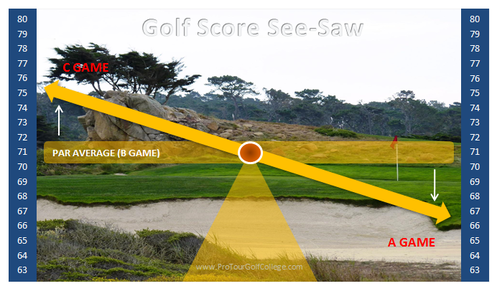 Also called a teeter-totter Also called a teeter-totter This is the only real consistency you can strive to create in competitive golf; when you have high scores you must have the ability to produce a low score to attain your B Game average. Your attitude to achieving this goal is the most important trait you can develop to become a professional golfer. Drive your C Game scores down and it affects your B Game average. And you can’t have a low B Game average without the ability to have a good A Game. The Golf Performance Model Every golf score you produce is a product of a whole range of variables that effect your performance from day to day. It is futile to attempt to produce consistent scores when you consider the factors that will influence the score that you produce. You can see in the model below that from day to day your A, B and C game score is being influenced by some of the following:
Not to mention the degree of difficulty of some golf tournament layouts you play. This is why it is difficult to achieve a linear style scoring consistency. It’s not going to happen, so focus more on developing your golf scoring skills and ability to have the flexibility to bounce back from C Game scores with A Game scores by playing the par 3’s, 4’s and 5’s better. Par is the Standard Your golf scores are a product of how well you play the par 3’s, par 4’s and par 5’s, so it makes sense that you understand how effective your scoring average is playing these holes. Here is a quick quiz: What is you scoring average on par 3's, 4’s and 5’s for this season? Do you know? Which of the par zones affect your C Game score the most? How about you’re A Game? When your score in the A Game zone which holes do you tend to play the best? Do you produce more birdies on the par 5’s or the par 4's? These are important questions when determining how you will improve your scoring ability. You should now understand that just practicing your golf skills in a random and haphazard way is not the approach to take if your goal is to play successfully on a professional golf tour one day. In-fact, it is much easier to extract the improvement from your game that you are looking for when you target the par zones first. Determine which of the par zones is your weakest and then work out what you need to do to improve your zone average with the help of your golf coach / instructor. In the example below Brandt Snedeker had a par 3 average of 3.01; a par 4 average of 4.02, and a par 5 average of 4.59 for 78 rounds of golf on the PGA Tour in 2012. From these simple statistics you can see that it is easier to understand how Brandt Snedeker played the par 3, 4 and 5 holes, and when you consider that the 78 rounds he played were played in all types of conditions, and on all types of golf course layouts, it is a fine example of how he has developed his scoring ability to produce a competitive score average for the 2012 season of 70.10 (actual). (Click on the images to make them larger) In contrast take a look at Matt Bettencourt’s results (above right) for the 2012 PGA Tour season. He played 6 rounds less than Brandt Snedeker and his score average was 72.9 for the 72 competitive rounds he played. He scored 2.8 strokes per round higher than Brandt Snedeker’s score average of 70.10. Now you can see that the explanation is quite simple on the surface. Brandt Snedeker played the par 5’s better and kept the bogeys and worse from his card better than Matt Bettencourt. Now I know that there’s a lot more to it than this, however you have to start somewhere and determining how many pars, birdies, bogeys and worse you make on average is a great start. Too often we see advanced golfers going straight to the common statistics of greens hit, etc. when they produce C Game results without really looking at what we call the Golf Score Code.  The Golf Score Code What was your Golf Score Code for last season? Every time you play a round of golf a percentage of your round score will be made up of par’s, birdies, bogeys, double bogeys and worse. Sometimes you’ll even have an eagle or better. Your golf score therefore is simply a reflection of how skillful you are at producing scores equal to the par of the hole-better or worse. The number of pars, birdies etc., you produce is the substance of your score. You improve your golf skills only so that you can make more pars and birdies, and less bogeys and worse. Tiger Woods was ranked third in the category of ‘Bogey Avoidance’ on the PGA Tour in 2012 (which is calculated as the percentage of times he makes bogey or worse), and he produced only 171 bogeys or worse for the 1206 holes (14.18 %) he played on the 2012 season. When Tiger won The Players Championship in 2013 all we see on the scoreboard is the final analysis - the total score for 72 holes (- 13 275). What we don't see is his Golf Score Code. The Golf Score Code is the number of pars, birdies etc, that he produced over the tournament, which is his formula that made up his winning 72 hole total. His Golf Score Code for the week was: 11.75 - .25 - 4.5 - 1.25 - .25 The Golf Score Code What is Your Golf Score Code? In our experience elite golfers don't look at their Golf Score Code to determine the strategy required to improve their competitive score average. As I mentioned earlier they will focus on how many fairways and greens hit, and so on without determining which skills have the most influence on the number of pars, birdies etc., that they make in a golf tournament. By analyzing your Golf Score Code carefully you can make better strategic decisions regarding your golf improvement pathway. And if you want to play successfully as a top level amateur golfer, or you want to play successfully on a professional golf tour then you simply have to improve you Golf Score Code. Next week I'll share with you how to determine your strategic direction with your golf improvement and the next level beyond the Golf Score Code - The Golf Score Success Code. This is the expert golfer formula you have to know and develop to become a successful golfer - whether amateur or professional. Lawrie Montague and David Milne - Pro Tour Golf College Your Success On Tour is Our Business 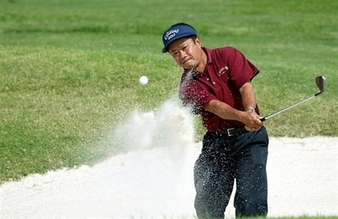 Why doesn't the Asian Tour rival the PGA Tour or European Tour? The question is simple but the answer is complicated, or so it seems! It has been discussed and argued by tournament organizers, national bodies, tournament professionals and it all comes down to one main issue, TV rights. There are two factions going head to head since 2008 and they are the Asian Tour (owned by the players themselves) and the World Sports Group that runs the One Asia Tour. This year there will be 22 tournaments on both the tours that will offer over US$1 million dollars in prize money and that’s not including the limited field CIMB (US $6 million) in Malaysia and the HSBC (US$8 million) in China. And with Asian golfers now starting to win all around the world, there are sponsors waiting on the sideline - especially in China and Korea who are not sure which tour to support and therefore are not committing their sponsorship dollars.  When all parties can get together and come to an agreement (which does not look like its a possibility at the moment) there could be up to thirty two tournaments offering US$1 million plus prize money. This will rival the Japanese Tour which is offering between US$1 million to US$2 million per tournament and losing tournaments each year. When this occurs the thirty two tournaments could be classified as Tier One and this will allow the tournaments between US$300,000 to US$750,000 to be the feeder tour just like the Web.Com Tour for the PGA Tour, and the Challenge Tour for the European Tour. Consequently this makes the local tour in each Asian country (like Korea, China, Thailand, Malaysia, India, Philippines, Taiwan, Indonesia and Singapore) as Tier Three Tours which will encourage the development of young Asian professionals and give them a pathway to become world class golfers. For the good of Asian golf it makes sense, but in this circumstance it will take a person who can get both parties to sit down and find a solution that will allow the amalgamation of all tours in Asia under just one Tour. It will happen, but let’s hope it’s sooner rather than later for Asian golf. David Milne and Lawrie Montague - Pro Tour Golf College Your Success On Tour is Our Business The One Simple Factor that Separates The Pro's On Tour That Make Big Money From Those That Don't24/5/2013
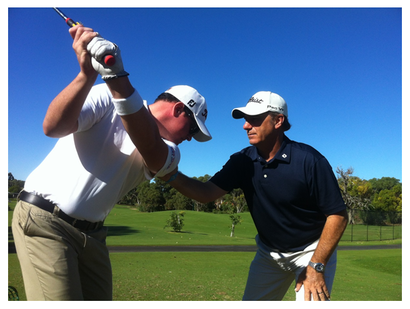 I recently sat down with one of our students in our Tour Golfer Bridging Program (he's 16 years old) to discuss his goals with his golf. Like many young golfers we work with his major life goal is pretty simple, straight forward and to the point; “I want to play on the pro tour in 4 years,” was his answer. “Great I said, that is an admirable goal that many before you and after you will have but it doesn't tell me much does it?” “What do you mean?” “Well, of course I know what you mean when you say that you want to play on a professional golf tour however it’s a little vague don’t you think? I mean after all there are many golfers playing on pro tours around the world and most of them are broke or going broke!” “In other words, they spend a lot more money than they make trying to play golf on a pro tour”. “They also had the goal of playing on a pro tour just like you and when they got there they had achieved their main goal, but then what?” “You see it is not enough to just want to play on a pro tour I think you have to have bigger, richer and more specific goals than that”. “You need to prepare your game in such a way that when you do get onto a pro tour you will be ready to make a high percentage of cuts and finish high enough up the money list to make a lot more income than you spend after expenses and taxes. You see the reality of professional golf is that you are using your golf skills and playing ability to play good enough to make money from the game of golf. Many young golfers just like you want to play in the big tournaments you see on TV and earn the big money playing on a major golf tour, but it takes more than a phenomenal shot-making ability to make it on the pro tour.” 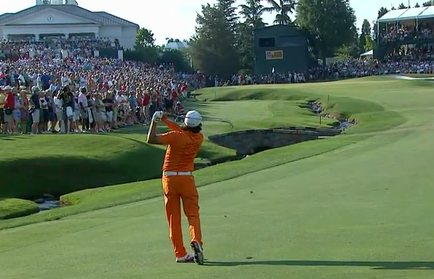 “How many golfers tee it up in a pro tournament? “I don’t know, about 150?” “Yes 150 to 160 players will tee it up in most professional golf tournaments, and how many golfers are left in the field once the cut has been established? "I'm not sure?" "About 60 professional golfers get the opportunity to make a check in the tournament after they make the cut and they can make a good check if they finish high enough up the money list”. “So out of 160 golfers who tee it up in the tournament every week in smaller pro tournaments about 20 will make a good check for the week which is about 12.5 percent of the field”. “I never thought about it like that”. “It is no small matter making a decision to become a pro tour golfer and if you want to play on the pro tour by the time you’re 20 years old then you have got to understand the professional game – which is a very different game to the amateur game”. “So let’s discuss the facts that should influence the way you go about achieving your goal of playing successfully on a pro golf tour. "Great!" "Firstly you should realize that the main difference between the amateur golfer and professional golfer is their attitude about producing a score is quite different. If you don’t play well or up to your expectations in an amateur event you can chalk it up to experience. In other words it doesn't matter too much that you didn't play so well because there’s always another tournament to play in. Now although that level of thinking is also consistent in professional golf, the real difference is that you cannot afford to chalk it down to experience on the pro tour because it costs you lots of dollars every time you tee it up. In pro tour golf the formula for success is actually quite simple to understand: Level of Success = Earnings (Income) - Expenses In pro tour golf your level of success is equal to your ability to make a lot more money than you spend. And to make cuts and make money you have to learn how to lower your high score average". Lower Your High Score Average 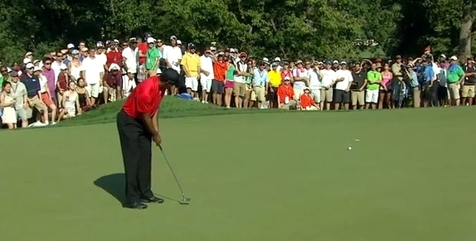 “The key to understanding success on the pro tour golf is that you have to build an attitude of never giving up on score. You simply cannot let yourself have scores above 2 over par on your very worst day on the golf course". "Why so low?" "It’s simple really; if you score + 2 on the first day of a tournament you can come out the next day and produce an under par score that will help you to make the cut. If you have higher than this score then you will miss the cut most of the time. Think of this as the ceiling of your golf scores". “Let me give you a good example of what I mean. Andy Bare a pro tour golfer playing on the Web.Com Tour in 2012 was ranked 100th in score average (actual) with a competitive score average of 71.22 from 59 competitive rounds. The par average for the 21 tournaments he played in was 71.21, so he was .1 over par for his 59 competitive rounds". “That’s a pretty good score average isn’t it?” “Par golf for 59 rounds of golf is a good average in amateur golf, but as you’ll see it is not nearly good enough to make a good income on the Web.Com Tour, or for that matter any of the professional golf tours. Here's a profile of his scores for the 2012 season for you to study". "Andy Bare made 43 percent of cuts for the tournaments he entered and earned $28,585 for the 21 tournaments he played in. So if you think about it, he competed for 21 weeks and let's say that with travel, accommodation, transfers, meals, caddy and so on he would have spent a minimum of $1500 dollars per week on average for the weeks he competed on the Web.Com Tour, and based on his earnings of $28,585 less his expenses of $31,500 he would have made a loss of just under 3 thousand dollars for the season". 28,585.00 (Earnings) 31,500.00 (Less Expenses) 2,915.00 (Loss) "That's not a lot of money for the effort. I mean he had a pretty good average for the season" "You're right, its not a lot of money for the effort, and don't forget he needs money for the next season." “In contrast another Web.Com player Matt Weibring also played 59 competitive rounds of golf on the Web.Com Tour in 2012 and his score average (actual) was 69.87 for the 22 tournaments he played in. The par average for the 59 rounds was 71.16, so he was 1.3 strokes under par on average. He made 61 percent of cuts for the tournaments he entered (20 percent more than Andy Bare) and he earned $130,239, or about 100,000 dollars more for the same amount of rounds of golf. You can see from this that 1.3 strokes per round difference makes a BIG difference to your bottom line". 130,239.00 (Earnings) 31,500.00 (Less Expenses) 98,739.00 (Profit) "Wow! that is a big difference". "Remember there's just 1.3 strokes difference per round". A, B and C Game “Now this is where you learn to understand the importance of lowering your high score average”. Think of your high score average as any score that's 2 strokes higher than your competitive score average. We will call this your C game. Your B game is when you score around your competitive score average and your A game is when score 2 or more lower than your average ok?” “Got it” “Both of these Web.Com players are really fine tour golfers however Matt Weibring had a lower high score average for the season. Matt Weibring had 11 C Game rounds (+ 2 or more above average) with a high score of 75 in his 59 rounds and a high score (C Game) average of 74.45 for the season. Andy Bare had 13 C Game rounds with a high score of 78 and a high score average of 75.61 for the season”. "But you said that you shouldn't have more than plus 2 for your C Game rounds?" "That's true, in pro tour golf you shouldn't if you can help it, because when you do, you will more than likely miss the cut and make no income for the week. Have a look at the illustration below to understand what's really going on here". "What do you see?" "Well the most obvious thing is the variance in scores with Andy Bare compared to Matt Weibring. Even though his high score average is only about 1 stroke higher, he's not as consistent as Matt at keeping his high score average down". "That's correct, Andy's high scores are higher, which means that he'll miss more cuts over a season". "And if he misses more cuts he can't make as much money because he gets less chances to do so, can he?". "Right again!" "You see this is a really important lesson in understanding pro tour golf. You have to develop an ability to keep your high score average down to be successful". "So your C Game is the key to lower golf scores?" "Well yes and no. It certainly helps you because it helps you keep your competitive score average down over a season. Andy Bare had 19 scores under 70 which is 32 percent of his scores better than 70, and an A Game average of 68.1. But because he shot some bad C Game scores he missed more cuts and made less income". "Matt had 29 scores lower than 70 of his 59 rounds which is 49 percent of his rounds below 70. His A Game average was 67.1 which again is only 1 stroke better than Andy. You can see that keeping the high scores off your score card is the key to producing results that you get paid for in professional golf. These two guys are just two of many highly skilled professional golfers who want to make big incomes from playing golf on tour and by lowering your high score average you make it just a little bit easier". "I can see that now, I would never have thought about it like that. So my goal should be to work harder on my scoring ability so I can keep my high score under control?" "That's right, you have to develop your high pay-off golf skills. All these guys and gals playing on tour can shoot the low score. That is not the problem for them, they have great A Games, but its their C Game average that affects their competitive score average, and that will decide how successful they will be at earning income in professional tournaments. Next week I'll show you the next step in building your plan for transforming your amateur game into a pro level game". "I can't wait to find out what it is". Lawrie Montague and David Milne - Pro Tour Golf College Your Success On Tour is Our Business  What is a Secret? When I looked it up at Wikipedia this is how they defined it. Adjective Not known or seen or not meant to be known or seen by others: "a secret plan". Noun Something that is kept or meant to be kept unknown or unseen by others: "a secret formula". The Secret Formula We've studied the best professional golfers in the world closely and we've looked at their statistics in tournament play over years and what we discovered is a simple secret scoring formula that few golfers know about that helps these great golfers play so well - so often. This golf scoring formula was consistent both with male and female professional golfers and what we discovered about these golfers is that they all have the ability to do three things consistently well when they compete in golf tournaments.
The Professional Golf Success Formula is 12 Pars - 4 Birdies - 2 Bogeys The 70 Percent Golfer Model The 70 Percent Golfer is a tag for any golfer who in practice can accomplish or even exceed a 70 percent score average in the four key performance categories consistently, and then has the ability to transfer this standard to the golf course when competing in golf tournaments. When you practice your golf skills you need to set up your practice routines so that you can accurately measure your level of success when practicing your golf skills. The four key skills to measure are;
You ideally will set up your practice so that you hit sets of 10 golf shots which will make it easier to measure and manage your golf skill development. The following four skill sets describe the standard to aim your improvement at if you have desires of playing top level amateur golf or if you plan on becoming a professional tour golfer.
When you assess your golf skills using our EGIS Golf Performance Zones will help you to know where you stand with you golf skills standard. In the 70 percent model you can see that we are aiming at getting into the red zone with the 4 key golf skill sets. And when you do, you'll be breaking par more often than not. Pro Tour Golf College 70 Percent Model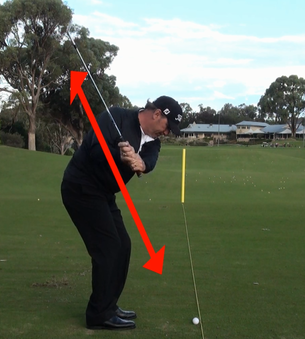 The Elite Golfer Improvement System In our new program The Elite Golfer Improvement System we have produced 10 assessment videos to show you how to set up and assess the different skills in your game from short putting through to to the long game and we've also designed practice routines and drills to help you to practice more effectively. We have also produced a number of videos that show you how to practice with higher intensity simulating the type of pressures you face on the golf course in tournaments as well as technical drills (like the one below) to improve your techniques from short-game to long-game. The following 10 minute video shows you how to practice your approach wedge skills so that you can hit your wedge shots straighter and the correct distance more often which in our 12 - 4- 2 formula will help you to make more birdies in your round. We hope you enjoyed our video and we'll have another next week leading towards the launch of our new program.
If you have any questions please feel free to email us at [email protected] Lawrie Montague and David Milne - Pro Tour Golf College Your Success On Tour is Our Business Who Were The Asian Professional Golfers That Blazed The Way For Today's Asian Professional?18/5/2013
 You have to go back to the late 1950's to trace the Asian professional golfers that started to make an impact in international golf. In 1957 Japan won the Canada Cup (Now World Cup) taking team and individual honors Representing Japan was Torakichi "Pete" Nakamura and Koichi Ono and their win helped spur a golf boom in Japan and Asia. Nakamura who won the individual honors at the Canada Cup was the first Japanese golfer to be invited and play in the US Masters in 1958 and finished 41st. He had the reputation of possessing the best short game of the period and his peers called him "Putting God". There are stories that he would line up his bunker shots as he was so accurate and even impressed a young Gary Player who still today rates him as one the the best bunker players in the history of the game. Japan led the way in Asia with players like Hideyo Sugimoto, Takaaki Kono, Haruo Yasuda winning in Japan and the Asian Tour. All three played in "Majors" with Kono's T12th at the US Masters as the best result. In the early 1970's a young strong ex baseball player by the name of Masashi "Jumbo" Ozaki came on the scene and took the Asian Tour by storm. The Japanese Tour was formed in 1973 and was the perfect launching pad for his career. He won 94 times on the Japanese Tour which is 40 tournaments more than second most wins on Tour! Although he did not play much outside of Japan throughout his career he maintained a top 10 World Ranking for over 200 consecutive weeks in his prime.  www.usgamuseum.com www.usgamuseum.com Ozaki was followed by Isao Aoki who is in second place on number of wins on the Japanese Tour with 51 victories. Aoki was the first Asian to win on the US PGA Tour when he won the 1983 Hawaiian Open. Mind you in 1980 he pushed Jack Nicklaus in the US Open at Baltusrol Golf Club and Jack had to tie the tournament record to beat Aoki into second place, which until Y.E. Yangs USPGA win in 2009 was the best finish by an Asian in a major championship. When the Asian Tour was launched in 1960 the careers of many Asian professional who didn't have the opportunity to play outside their countries were given a boost. Countries like the Philippines and Taiwan where there was a strong American influence and golf was a popular game. Most of the best golfers in these countries started in the game as caddies and then graduated to playing golf professionally. In the Philippines the leading players Celestino Tugot and Ben Arda were already accomplished professionals and they continued to win their National Open's and Arda nearly every other National Open on the Asian Tour. Arda not very big in stature but a fierce competitor and super popular with the galleries with his straight hitting and exceptional recovery skills around the greens. Taiwan these days have some good professionals competing but in the 1960's and 1970's was their golden years and they were always the ones to beat on the Asian Tour. The man who lead them was Chen Ching Po. He played in the 1956 British Open at Royal Liverpool Golf Club finishing T33rd and played in six US Masters from 1963 to 1968. His ball stiking was of a very high standard and was refered to as the "Asian Ben Hogan" and he wore the same style of cap as Hogan did. Being the father figure of professional golf in Taiwan he was affectionally known as Pappa Chen. The Taiwanese professional that followed him were some of the best to come out of Asia. Lu Lian Huan, Hsieh Yung Yo, Hsieh Min Nan, Hsu Chi San, Hsu Seng San, Chen Tze Chung who combined have won over 50 Asian Tour events! This does not include tournaments won on the Japanese Tour.  Lu Lian Huan or Mr Lu as he was popularly known as at the 1971 British Open held at Royal Birkdale came up one shot short of tying Lee Trevino for the Claret Jug. The best an Asian professional had done up to that point in a Major. Hsieh Yung Yo won 17 National Opens on the Asian Tour which I believe is still a record. Hsieh Min Nan has a unique record which no other golfer has achieved. He was individual winner at the 1964 World Amateur in in Rome and leading professional at the 1972 World Cup in Melbourne. Technically he was as good as it gets and is still competing on the Asian Tour in his sixties and still competitive against the young professionals. Chen Tze Chung was the first Taiwanese to earn a US PGA Tour card in 1982 and also the 1st to win on that tour winning the Los Angeles Open in 1987. But he is best known for double hitting a chip resulting in a quadruple bogey in the final round of the 1985 US Open when leading. He finally finished one shot shy to Andy North the eventual winner. There were many other professionals for other Asian countries that put their mark in international golf by winning on tour. Hang Chang Sang from South Korea, Sukree Oncham from Thailand, Mya Aye from Myanmar to name a few. All the professional named above were truly trail blazers that set the standard for the rest to follow and improve on. There is no doubt the present day professionals from Asia are achieving great things in world golf but they have a lot to be thankful to those few now old professional that set the pathway for them. David Milne and Lawrie Montague - Pro Tour Golf College Your Success On Tour is Our Business  One of the most common game improvement mistakes is to practice skills without beginning with a structured assessment of the strengths and weaknesses of your game. Many advanced and elite golfers practice golf skills often as a reaction to how they performed them in a recent tournament without realizing that the skill/s they're practicing might not be the ones that will actually make a real difference to the scores that they write on a score card. Flip Your Approach From Being Reactive to Proactive Reacting to poor shot-making is not the same as assessing your key golf skills to determine which areas of your game need more attention. In our approach to game improvement we always begin with an assessment of the different skills in a golfers game to identify the weakest-most important golf skills that will have the most positive impact on lowering your golf score average in tournaments. How to Get Found When You're Lost If you were lost somewhere you would logically look for some point of reference to help you to determine where you are relative to where you want to be. Assessing and measuring your golf skills helps you to gain the necessary clarity you need to help you to know where your skills are at the present moment so you can determine where you wish to go with them. In the following video (from our new program soon to be launched) David takes you through an assessment of one of the most important green-side skills that is rarely practiced enough by elite golfers, and he explains step by step how to perform an assessment that will show you where this important skill is in your game.  You should measure all of your key golf skills to extract the information you need to develop a suitable plan for improvement. If you are an amateur golfer interested in becoming a top class amateur or professional then this approach to developing your golf skills this way should be high on your priority list when you practice. Assessing your most important golf skills just makes good sense and should be a habit you action on a regular basis. Would you like more? Put your email in the space below to get on our priority list to receive the next video from our new program before anyone else. We will email it to you before anyone else gets the chance to watch it. Thanks for watching and we hope you enjoyed this video from our new program Elite Golfer Improvement System.
Lawrie Montague and David Milne - Pro Tour Golf College Your Success On Tour is Our Business  The USPGA Tour has been marketing the Players Championship as the 5th Major since changing the name from Tournament Players Championship to Players Championship in 1988. With US $9.5 million total prize money on offer with the winner taking home US $1.7 million, its the single richest tournament but still no recognition as the 5th Major. In 1982 the PGA Tour commissioner Deane Beman's idea of a permanent home for the championship came to fruition. The renowned course designer was Pete Dye and the Stadium Course at TPC Sawgrass, Ponte Vedra Beach Florida was built. It was the first purposely built "Stadium Course" designed to improve the overall on-site spectator experience. The design of the course which plays 7,215 yards from the "tips" is not overly long by todays standard and does not favour any particular style of play. With the world famous 17th hole par three island green as its signature hole and the tough 18th hole with water down the entire left hand side its a guarantee of a nail biting finish for players and spectators alike.  So who is going to win the Players Championship this year? If you go by last years results length off the tee was not required but accuracy did help! In the table above are the top six placings in last years Players Championship and their 2012 driving length and accuracy statistics. Except for Martin Laird all the others are ranked in the top 50 in driving accuracy and that seems to be the trend looking back at previous winners going back to 1982. Players like Tim Clarke, K. J. Choi, Fred Funk, Justin Leonard, Hal Sutton, Steven Ames who have won the Players Championship are renowned for their ability to hit more fairways than their competitors from the tee and accurate irons to the smaller greens at the Stadium Course. There have been long hitters who have won like Phil Mickelson and Henrik Stenson but only when they used their 3 woods extensively and kept the driver in the bag. Favorites will be former winners Tiger Woods (2001), Adam Scott (2004) and last years winner Matt Kuchar attempting to be the 1st player since the tournament started 40 years ago to go back to back with victories. This tournament has the strongest field of all the majors and that makes it even more difficult to predict a winner but I believe it will come from Lee Westwood, Justin Rose, Graeme McDowell. All three are residents in Florida so should feel at home. All the above three Europeans are excellent all round ball strikers and apart from Stenson's win in 2009 and Garcia's in 2008 you would have to go back to Sandy Lyle's win in 1987 to find another European win. From the USA side my picks will be Brandt Snedeker and last years runner-up Rickie Fowler who is ready to make a break through and become a world top five ranked player. The players from South Africa will be strongly represented and are due to add to Tim Clarke's victory in 2010. I'm sure you will enjoy watching the tournament like I will and watching the short par three 17th strike fear into the world's best golfers is always an interesting highlight. David Milne and Lawrie Montague - Pro Tour Golf College Your Success On Tour is Our Business  A Serratus Anterior injury is slightly rare, however they do occur occasionally and golf is one of the sports that it can occur in. This week in my clinic was one of those occasions. So what is the Serratus Anterior? It is a muscle that is attached on one end to the underside of the inner scapula (shoulder blade) and fans out in serrations (hence name) to attach to the lateral and lateral anterior portions of the first 9 ribs. Injury results in pain to the muscle site mostly, but can also refer through the shoulder, down the arm and into the neck. What is its action? The Serratus Anterior works a few actions:
The first two actions apply very strongly to golf. In fact in the duration of the golf swing the leading and trailing arm Serratus Anterior muscles will rarely fall below 20% of its maximal muscle tension. This makes it one of the most active (percentage of maximum wise) muscle’s in the whole swing. This is particularly the case in the leading left arm which is predominantly where the Serratus Anterior is injured. This prolonged activity in the swing, when repeated over many hits, can lead to fatigue in a weak muscle which will either cause injury to the muscle or compensatory swing movements.  So what was the cause of the Serratus Anterior injury with my golfer? He was a young professional, never been physically screened, who had just made two changes which could lead to the injury:
Firstly, normal acute muscle injury management (physiotherapy and relative rest as advised). Then, when appropriate, exercise’s to start increasing Serratus Anterior strength (push-up plus etc.). Lastly, a specific screening through the upper limb and back. With training the golfer will have to moderate the number of balls they hit when returning until the Serratus Anterior gets stronger. If pain remains after all these steps, the coach may have to intervene technically. If ignored and played ‘through’ the pain and muscle function will only deteriorate. In some golf case’s continued training and hitting of excessive balls (with a fatigued and/or strained Serratus Anterior) can lead to development of stress oedema and eventually stress fracture’s developing at the rib attachments. This outcome leads to a long duration of complete rest and more complicated management. So as with any injury, get onto it and fix it straight away. Martin McInnes - Physiotherapist 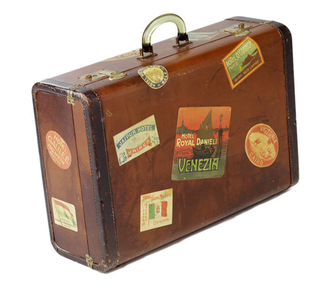 Traveling solo, away from home, family and friends can be a routine part of life for a tour player. On tour, many players will experience symptoms of homesickness. Granted, many of these symptoms may be easily dismissed and have no impact on athlete well-being or performance. What happens when homesickness does become an issue for you when you’re on the tour? Here are four valuable points to assist with restricting the impact of homesickness on your performance. 1. REALISE IT’S NOT JUST YOU 2. UNDERSTAND HOMESICKNESS AND PERFORMANCE 3. RECOGNIZE YOUR HABITS ON TOUR THAT MAY CONTRIBUTE TO HOMESICKNESS 4. BE PROACTIVE! Consider the following questions … •What are the challenges you might face on tour, even if its not your first season? •What kind of emotions might you experience during the tour season? If you have already embarked on multiple seasons on tour reflect and consider some of the challenges you are managing or have had to overcome. For many players the prospect of playing on the tour, in any part of the world, would evoke a roller coaster of emotional responses, such as excitement, joy, apprehension, stress, or anxiety. These kinds of responses all occur with good reason! Touring different environments can be stressful. 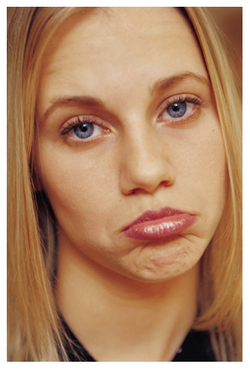 We may worry about how we will perform, how we will fit in with others, if we will learn the structures and procedures of the new environment, how we manage cultural differences, or how much we might miss home. 1. REALISE IT’S NOT JUST YOU In amongst all this emotion there are a few things that we must remember about touring… • Many pros express how lonely the tour can be, so you are not alone. • Playing on the pro-tour circuit can evoke array of emotions ranging from excitement and joy to anxiety and discomfort. These emotions are normal. • Experiencing these emotions is not the focus. The focus should be on how we choose to respond to them. UNDERSTAND HOMESICKNESS AND PERFORMANCE The following chain of events demonstrates how homesickness symptoms may link to poor performance: Poor management of homesickness symptoms » Poor well-being » Decreased performance in sport and education If you are unable to effectively manage homesickness this may decrease your well-being as the homesickness symptoms start to impact how you function. For example, your attendance to training, your quality of sleep, and your mood may be affected. As your well-being decreases so may your performance. This may present as a loss of motivation to train, loss of concentration and poor appetite, possibly resulting in poor performance outcomes. 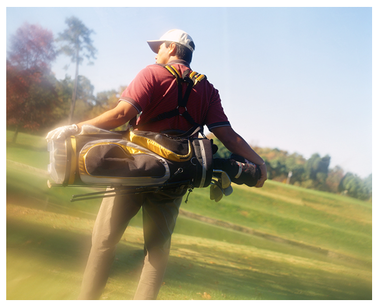 It is important to remember the experience of homesickness presents in different ways for different people. RECOGNIZE YOUR HABITS ON TOUR THAT MAY CONTRIBUTE TO ISOLATION AND HOMESICKNESS Players on tour will often keep to themselves, especially when they are not playing well. It is important to recognize that if this is a problem for you then you need to consider working on alternative coping strategies that do not isolate you from your friends or making new friends on tour. It is also important to consider who you choose to room with on tour and your own actions when rooming with others. Consider how you like to prepare the day or night before the tour. Players who decide to room together should know ahead of time about these things so that the room sharing works as best as possible for both players. That way it is unlikely to be an unpleasant experience. While all players should respect and support roommates pre-performance routines, it is important to be mindful that your own routine isn’t creating any unnecessary isolation or difficulties. As a pro-tour player, take a look at your own pre-performance routine. Talk with your coach and other players about suggestions for fine-tuning or adjusting your routine if you feel it is required. A routine that keeps you locked in your room all the time may be elevating anxiety and contributing to over-thinking about your round, which is certainly not preparing you to play your best round. Get into the habit of connecting with other players on the tour, not just the players from your own country. It is important not to just play your round and check out the scene. Meeting people does not have to compromise your post round practice and focus. If this is an excuse you often use to avoid connecting with others than it is important to consider what is holding you back personally. Remember tours can be a fantastic way to meet people from all over the world and provide options for training partners in the off-season. Despite how you are feeling, taking a proactive approach to your circumstance will help reduce the impact of homesickness on your well-being and performance. 4. BE PROACTIVE! This involves being proactive in your new environment. How to be proactive may differ between people however some examples might include: •Planning and/or become involved in social events. •Spending time with friends/teammates outside of training/competition. •Seeking help when required. •Talking about homesickness with others. •Developing a social support network. •Developing a plan to learn about your new environment. •Identifying with what you most enjoy most in both environments. Additionally, an appointment with a psychologist can help you to identify and manage your experience of homesickness and help you prepare for some of the challenges you might face on tour… Seeking out someone to work with is another way to be proactive! Brendan Smith | Psychologist Email Brendan on [email protected] if you have any further questions, or visit www.mentalnotesconsulting.com.au to find out more about the signs and symptoms of homesickness. |
Archives
June 2019
|
Proudly Supported By
Copyright © 2011 - 2018 Pro Tour Golf College
Website Managed By Golf Performance Media
All Rights Reserved
Website Managed By Golf Performance Media
All Rights Reserved



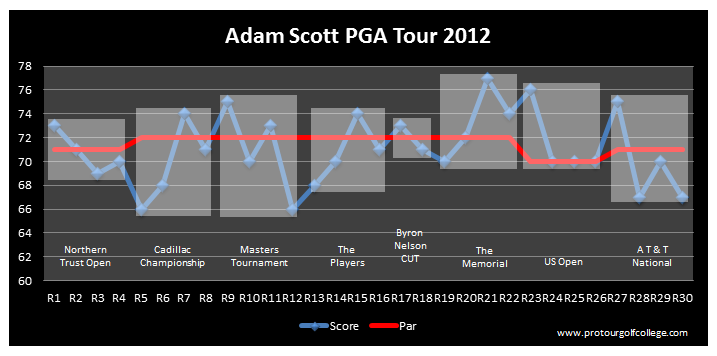










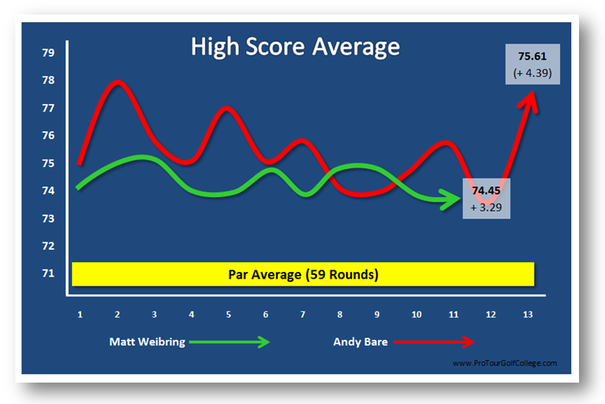
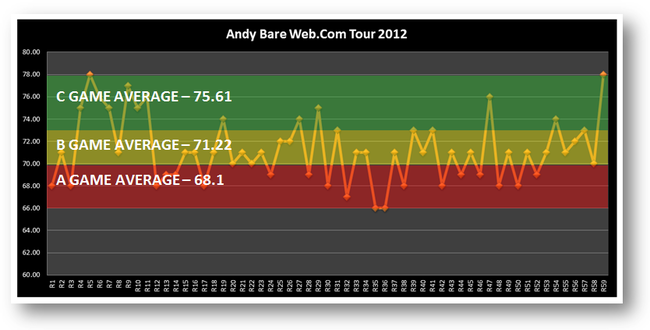








 RSS Feed
RSS Feed



